The idea of tracing the history of the various college golf awards and medals has always intrigued me. Golf in particular has a very interesting history when it comes to the variability of the trophies - in every interpretation of the word - awarded. Even though the NCAA standardized the look of their championship trophy awarded across all sports going back to the 1950s, it has still gone through several redesigns. For five decades the standardized NCAA golf awards - both plaques and medals - featured a nude figure with an interesting story. Let’s take a closer look at the naked man you might have never noticed before, but will not be able to un-see now.
*NOTE: underlined text provides a link to references or sites with more information
PREVIOUS MEDALS
Medals have been important awards in collegiate golf from the very first meet in 1896. The Intercollegiate Golf Association (IGA) - a student run organization which governed the collegiate championships from 1897 to the 1930s - awarded various styles of medals over the years to individual winners (hence “medalist”) and players on championship teams. Once conference golf championships began in the 1920s, those winners also received medals. When the NCAA took over running the championship in 1939, they continued the practice with a new style of their own using a design that lasted through the WWII years and into the late 1940s.
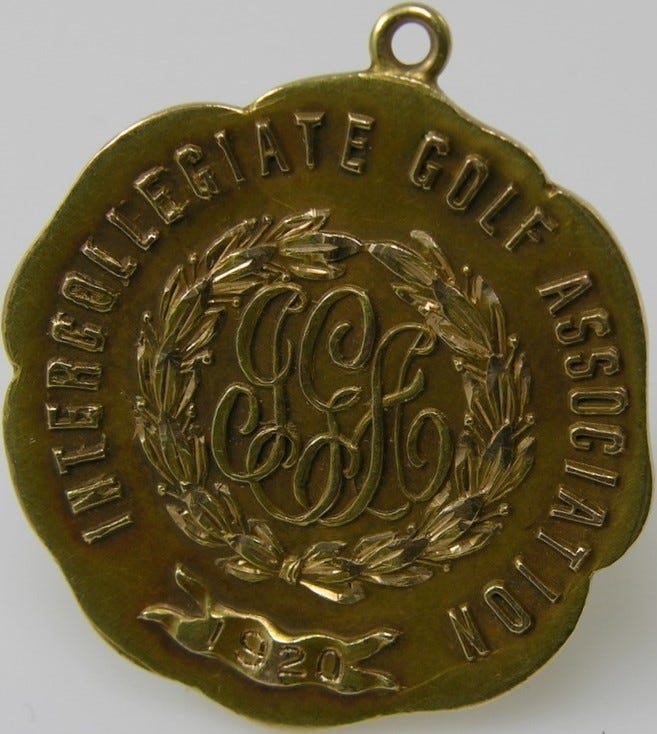
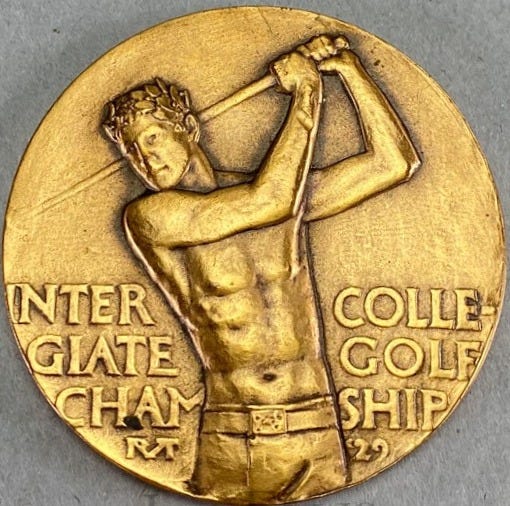
MEDALLIC ARTS
Sometime around 1948-50, a young Bill Louth landed a contract with the NCAA to make a new style of championship trophies. Louth, the nephew of Medallic Arts owner Clyde Trees, had recently joined his uncle in New York City after an honorable discharge from the Navy at the conclusion of WWII and graduating from DePauw University (Indiana). Medallic Arts had grown into an incredibly successful company, working around the clock to meet the demand for an array of war service medals ordered by the US government. Along with the eventual 4 million military medals, the company also produced a wide variety of medals for companies needing awards or were celebrating special anniversaries.
After landing the account with the NCAA, Louth had two major contributions to the creation of the new trophies. The following is from a personal post made by one of his friends and the man who wrote his obituary, D. Wayne Jonson:
No family favoritism from Uncle Clyde — Bill got the toughest jobs, and the least praise. But he marshaled on, doing Clyde’s bidding no matter what, until he got to actually work at attracting new customers, building new business.
One of the first, Bill recalled in later years, was the National Collegiate Athletic Association. They were to make their trophies. Eliminate the towers of pot-metal athletic figures. Instead he worked with company artists to create a new form with relief galvanos mounted on walnut boards.
Bill’s contribution was the shape of the boards. An artist – in this case Robert Weinman – created a separate relief for each sport in about a six-inch size. This was surrounded by a wreath all made by the electrogalvanic process. When these were finished and relieved the brown galvanos looked stunning against the dark grain walnut stands.
This proved to be an early success for young Bill and a sustained business for as long as he was connected with Medallic Art.
So the first of Louth’s contributions to the new style was for the board itself, which was used for all of the sports that the NCAA would award championship trophies to starting in 1949-1952. The second contribution was a little more...personal.
Robert A Weinman was a “medalist” or “medallic artist” with a studio based out of NYC. He was chosen by Medallic Arts to create a series of sports medallion designs for the NCAA trophy contract. The NCAA logo - featuring a male athlete receiving a laurel wreath along with the organization’s founding year (1906) - was created to appear on every board and the obverse of the medals awards. The main focus, however, was to be an athlete depicting a characteristic of the individual sport. The problem was that uniforms and clothing in general could easily become outdated, as had already happened with college football’s infamous Heisman Trophy. As Louth himself put it in his interview with Sports Illustrated in 1970:
"All figures should be nude. Then they are timeless. A uniform or clothing can be dated by year, place and environment. The caps and numerals on baseball uniforms have changed; track shorts used to be longer; and now you have the bikini swimming trunks."
The story goes on to say that Louth, who was president of Medallic Arts at the time of this article but not when these designs were being created, ended up as the nude model for the golf design:
Louth himself was the model for the NCAA golf medal. A 19-handicapper, he insisted that the medallion portray an adequate golf swing. "O.K.," said the artist, "bring your clubs up to the studio and I'll copy yours." Pleased with the notion, Louth arrived on a Saturday morning. He pulled an iron from his golf bag and began to pose. "Strip," said the artist. Louth took off his shirt and trousers and picked up his golf club again. "Strip," ordered the sculptor. So the president of a half-million-dollar company, maker of the nation's war medals and the Pulitzer Prize awards, spent his day teeing up a golf ball in the buff.
According to his Numismatics Society bio, Weinman received special recognition for his sports medal designs in 1952.
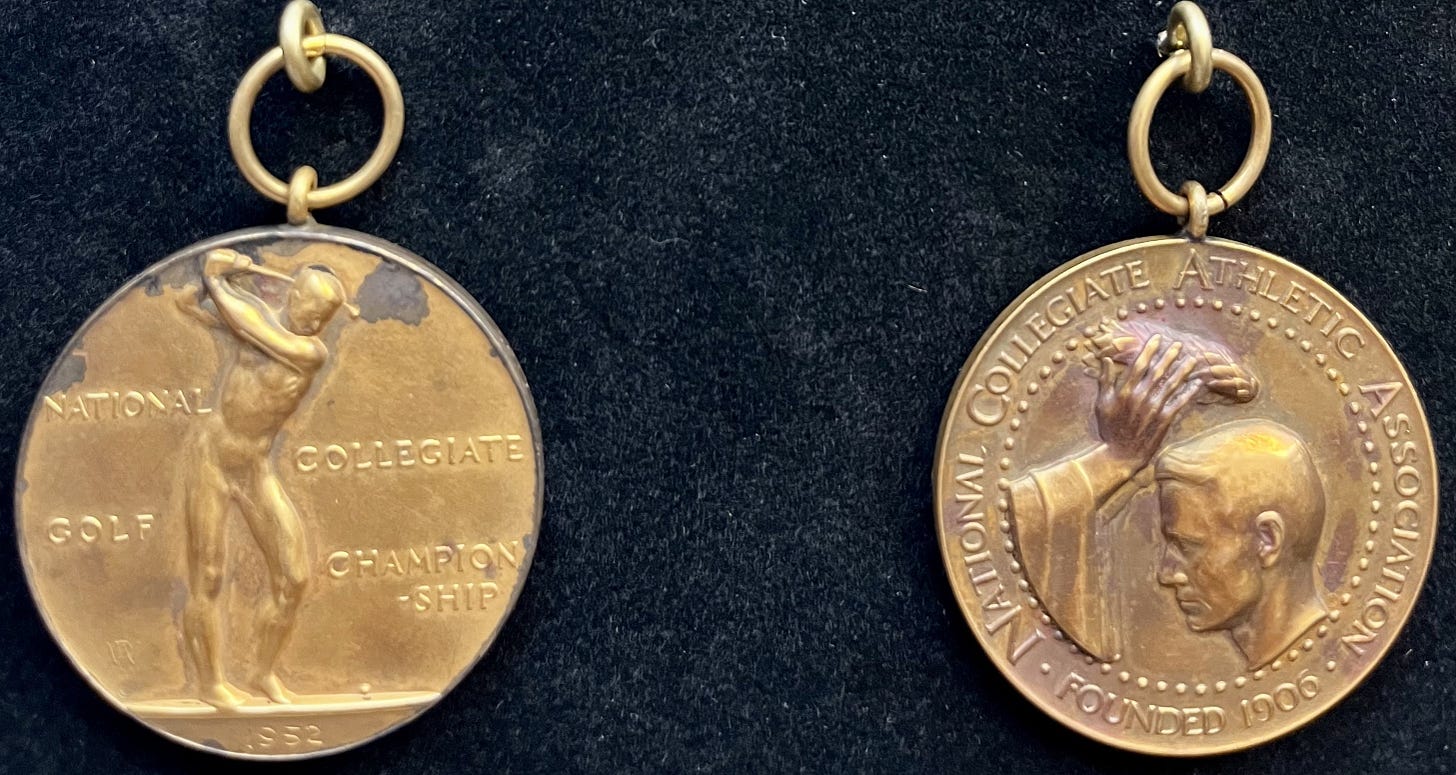
NCAA GOLF PLAQUES APPEAR IN 1950s
You’ll notice that we keep giving date ranges for the introduction of this nude golfer design. That’s because we simply don’t (yet) know the exact dates. Although there are references dating the concept to 1950, the earliest confirmed use of Weinman’s nude athlete design is from the 1951 NCAA basketball plaque pictured above.
We’ll be sure to update this section as our research deepens, but for now the earliest confirmed awarding of the nude golf plaque and medal came in 1952. The Hiskey family has a wonderful display containing Sonny Hiskey’s medal (pictured above) that he was awarded as a member of the 1952 champion North Texas State team. Below is a photo of individual champ Jim Vickers [Oklahoma] inspecting the names of past champions engraved on the Chick Evans Bowl and runner-up Eddie Merrins [LSU] holding his plaque.
Just to make things more interesting, the photo below may prove that the plaques were introduced as early as 1949. Iowa State, which hosted the 1949 championship, has a wonderful collection of items which includes this undated photo of Northwestern Athletic Director Ted Payseur who also served as the NCAA Golf Committee Chairman 1948-58. Payseur is pictured with the various awards including the plaque with the now familiar design. If this photo proves to be from the 1949 championship, then golf might have been the first sport to feature Louth’s trophy design with Weinman’s medallions.
Several players over the years have been photographed holding this style plaque. One of the most famous examples came in 1961 when a phenom playing at Ohio State named Jack Nicklaus blitzed the 64-man individual bracket to take home the individual title shortly before doing something similar at the US Amateur. After his collegiate victory, Nicklaus paused to be photographed with the Chick Evans Bowl - which he got to keep for 1 year - and his plaque which was his to keep.
These individual plaques were eventually replaced by an elliptical design featuring equally-sized NCAA and sports figure medallions.
NEW STYLE OF TEAM CHAMPIONSHIP TROPHY
The 1964 championship marked the 7th time (in 9 years!!) that Houston walked away with the team title. This time also came with a new style of team trophy. Medallic Arts expanded on the “board” concept and applied it to the team trophy, however now the NCAA logo medallion - now referred to as the “seal” - was the focal point and the nude golfer was moved to the base plate near the inscription. The photo below of Houston’s 16 national championships1 shows the array of styles from the original board to the trophy and then finally the larger board. The exceptionally high quality photo below that of Ohio State’s 1979 championship trophy shows all of the finer details of the new design.
When the NCAA voted to sponsor women’s sports championships in 1982, the NCAA logo was updated by adding a female athlete in the foreground. Although the trophy style remained the same, the women’s variant of the sport logos were clothed and given a different pose.
NUDE GOLFER RETIRED
After five decades and thousands of awards, the nude golfer and his nude buddies were retired as a part of a full redesign. The final supply of the iconic trophy was awarded in the first two championships of the new millennia as the new design was finalized.
The new design, developed by an internal NCAA graphics team and the House of Usher (I swear I’m not making this up!) trophy supplier used since 1981, moved away from the male and female figures, and instead focused on the equipment unique to each sport. For golf, the logo became a stylized golf ball and tee, and was first hoisted by a Minnesota Miracle team at the 2002 championship.
This style only lasted a few years until it was replaced in 2008 with the current (as of 2024) design. This new trophy - created and manufactured by MTM Recognition - returned to the golfing figure, however this time it was a basic silhouette shown from the waist up. Although I can’t prove it, I for one choose to believe that the golfer is nude in spirit to pay homage to its naked forefather.
Thanks for reading!
There’s something a little off about this photo that we are still researching. The dates on the two traditional looking trophies clearly show the dates 1959 and 1960. This would imply that the two plaques next to them came from earlier championships and the larger boards came later. This is fine except for the fact that Houston won 3 championships prior to that: 1956, 1957, and 1958. Furthermore, Oklahoma State’s 1963 championship trophy looks very much like Houston’s 1959 and 1960 trophies, implying that there should be another Houston trophy for their 1962 win. Since the NCAA likely would not have changed styles between any of those years, it seems like perhaps this array of trophies is using two of the later “board” style trophies - perhaps from one of their runner-up finishes in 1968, 71, or 72 - as stand-ins for one of the 1956/57/58 years as well as 1962 for some unknown reason. This is pure speculation on our part and, right or wrong, we’ll be sure to clarify that in the future.

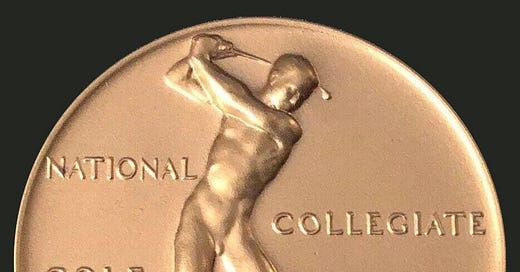




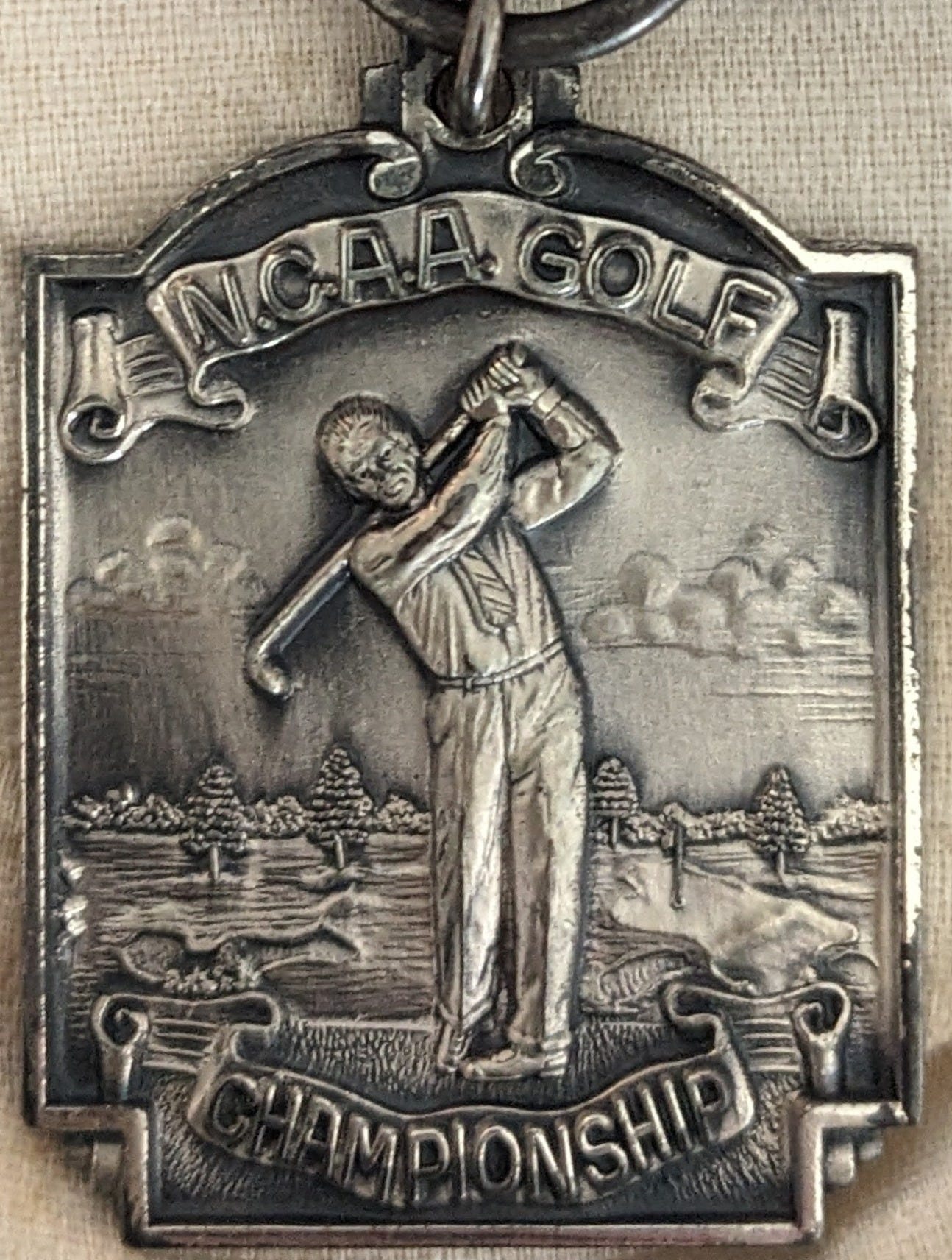
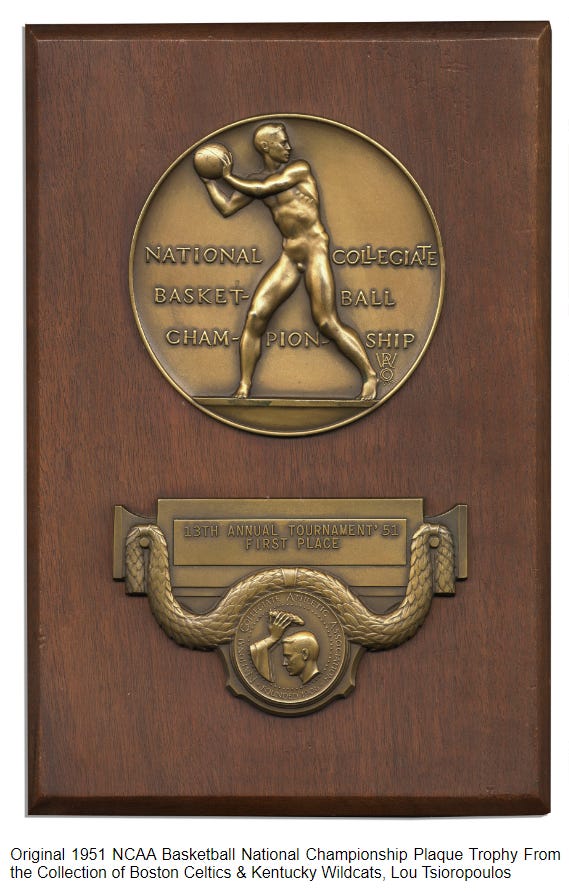
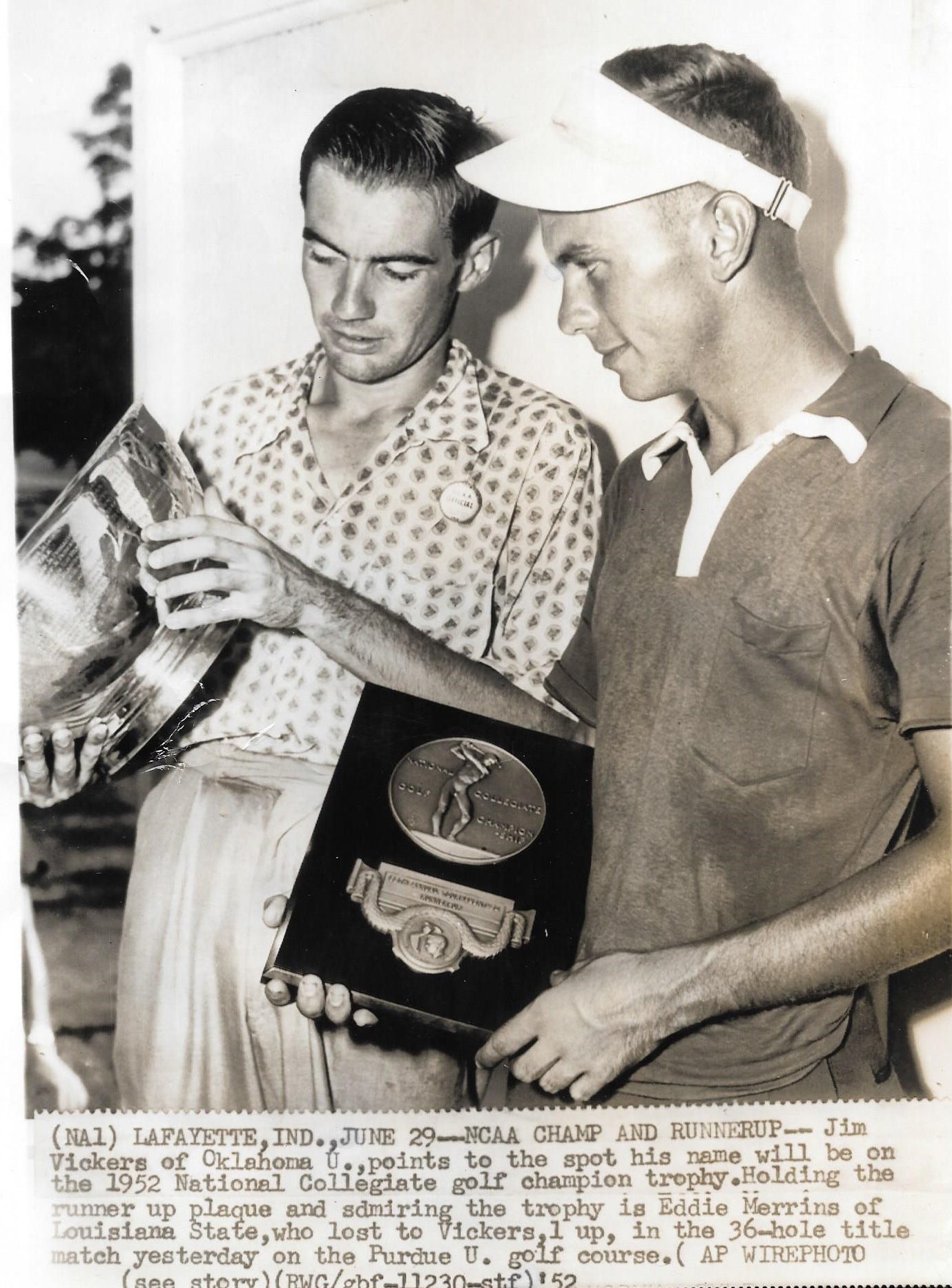
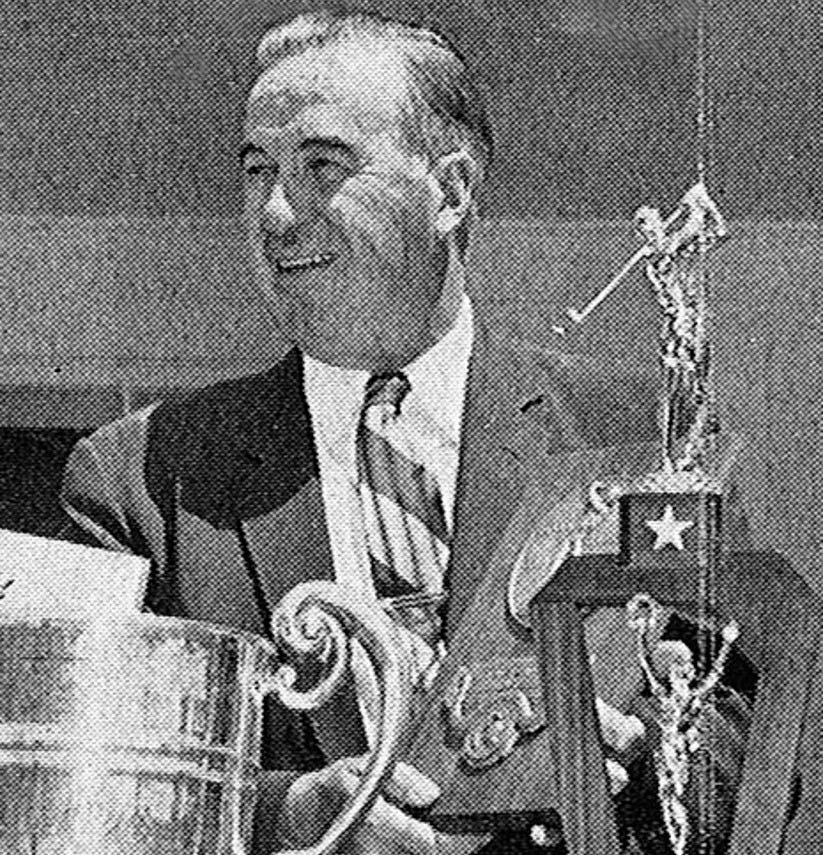
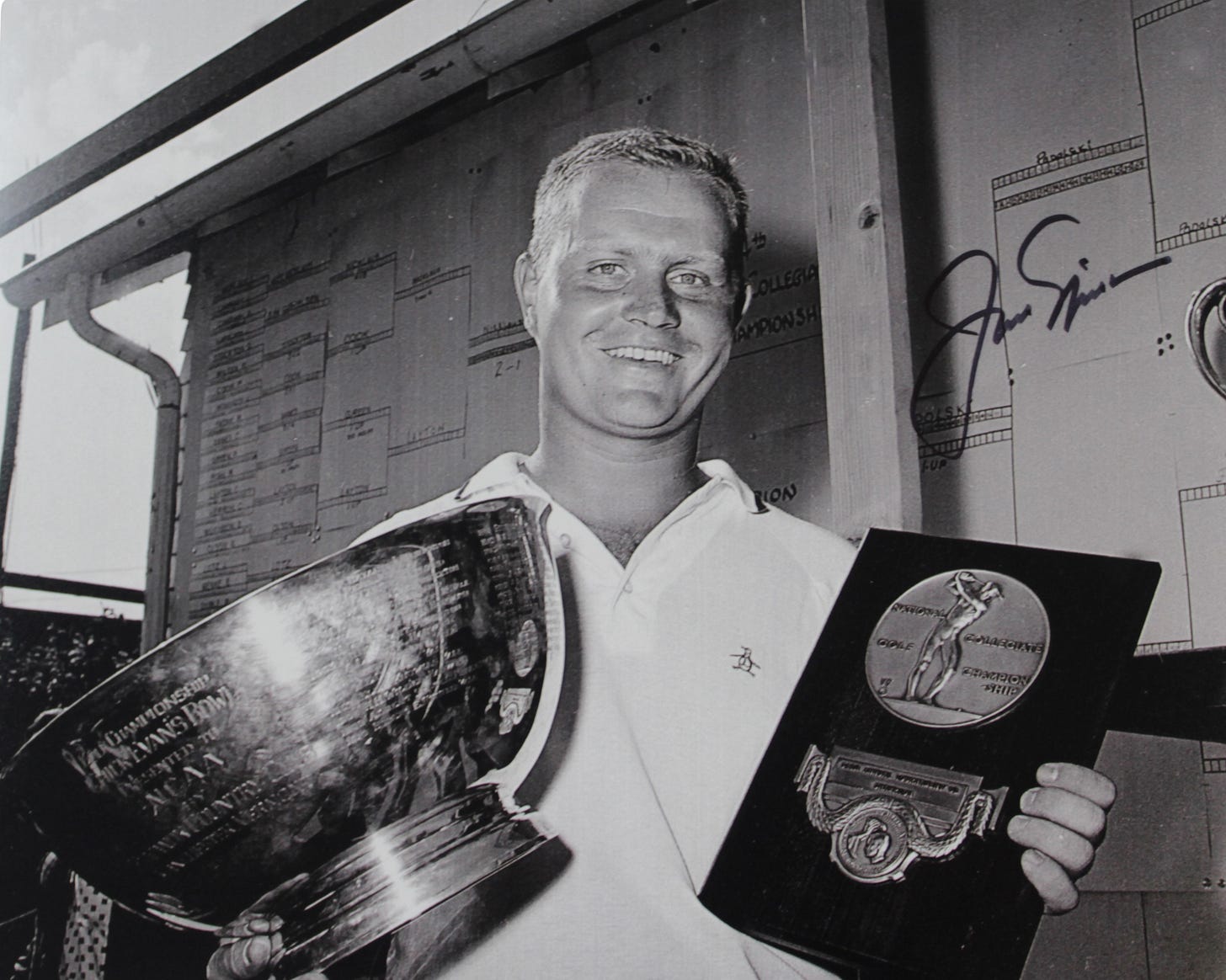
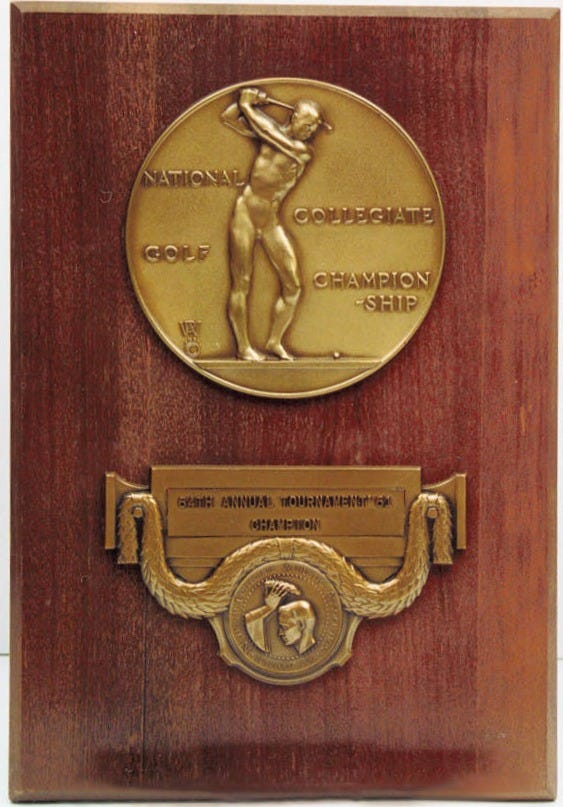

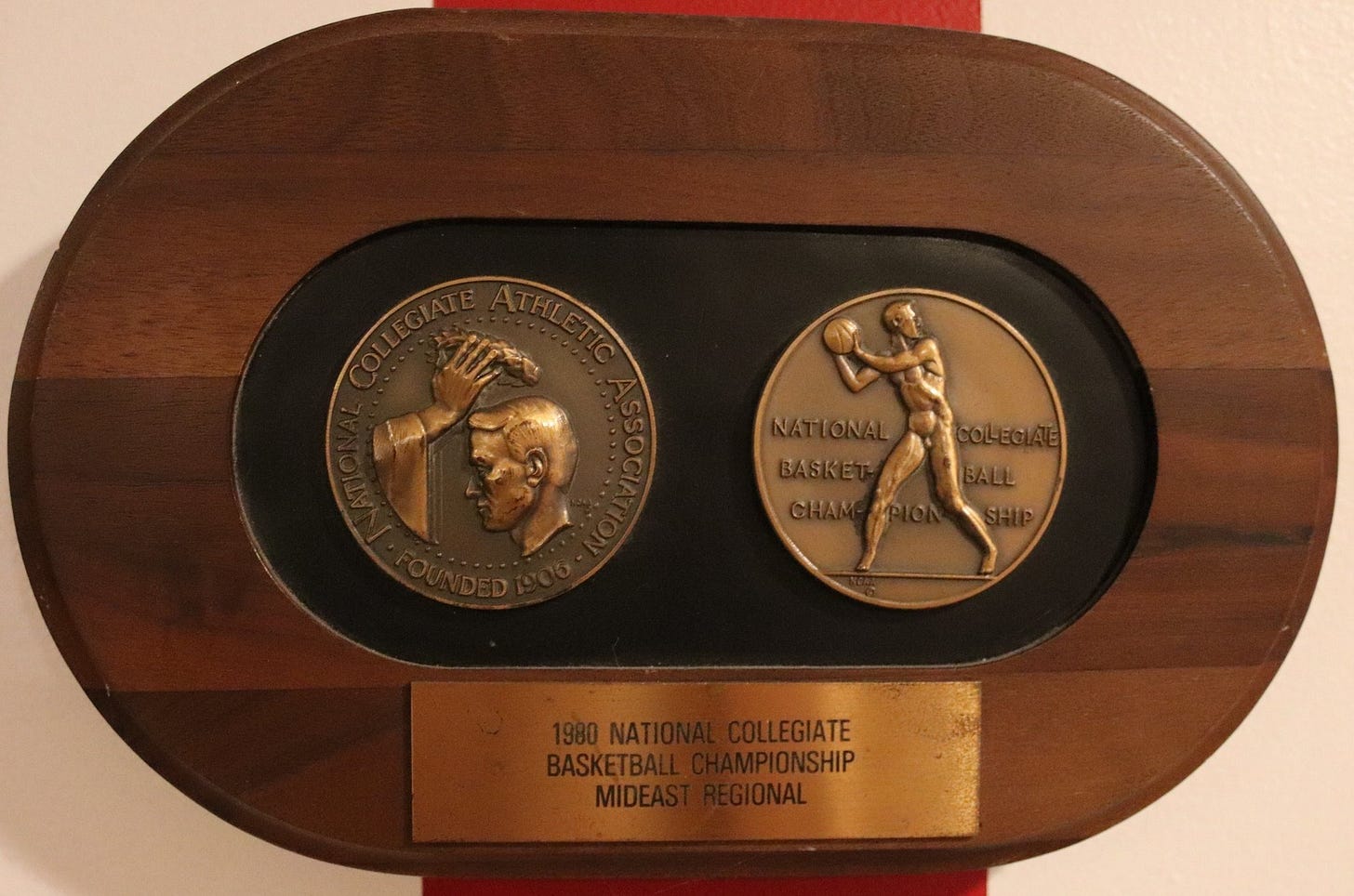


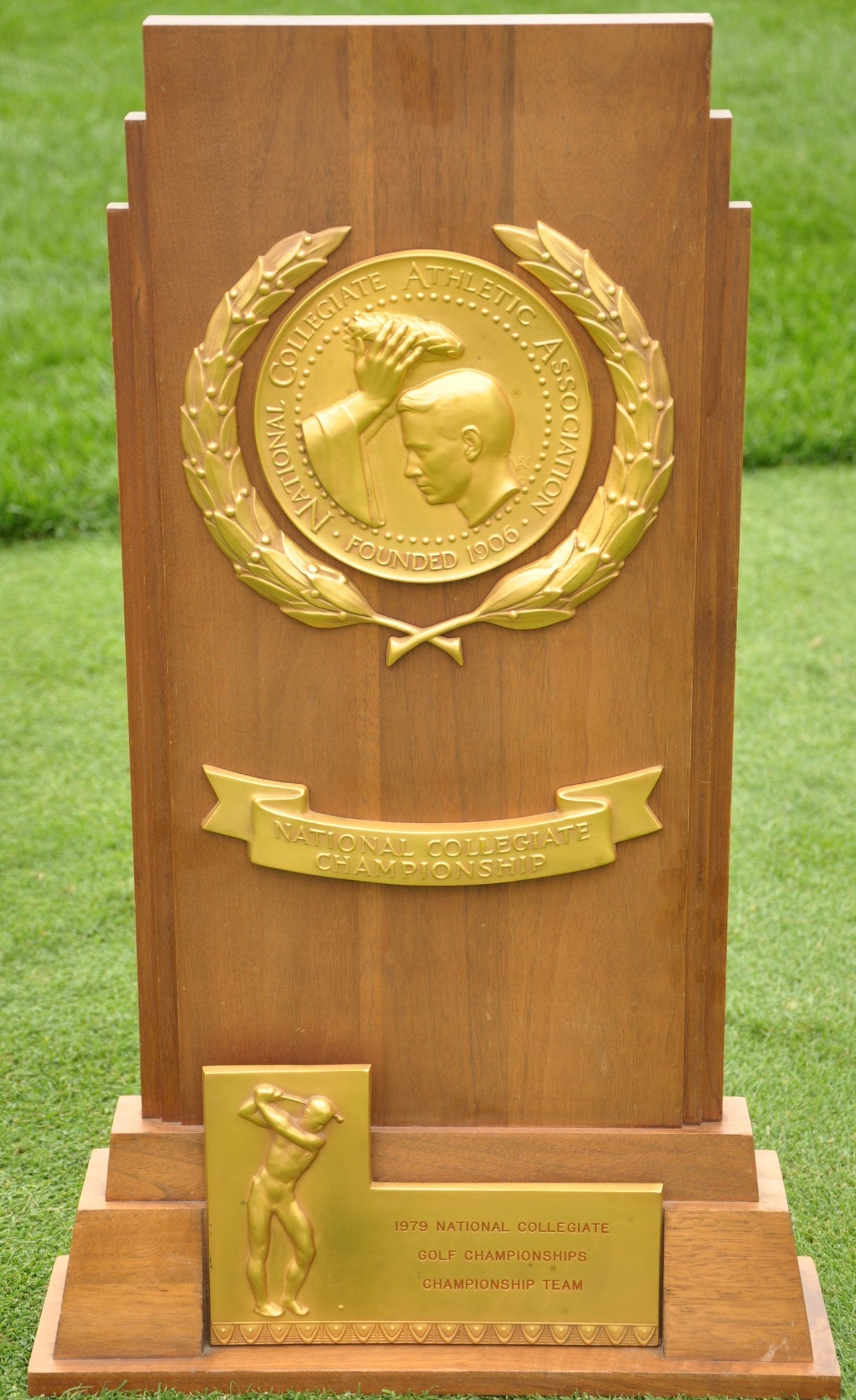
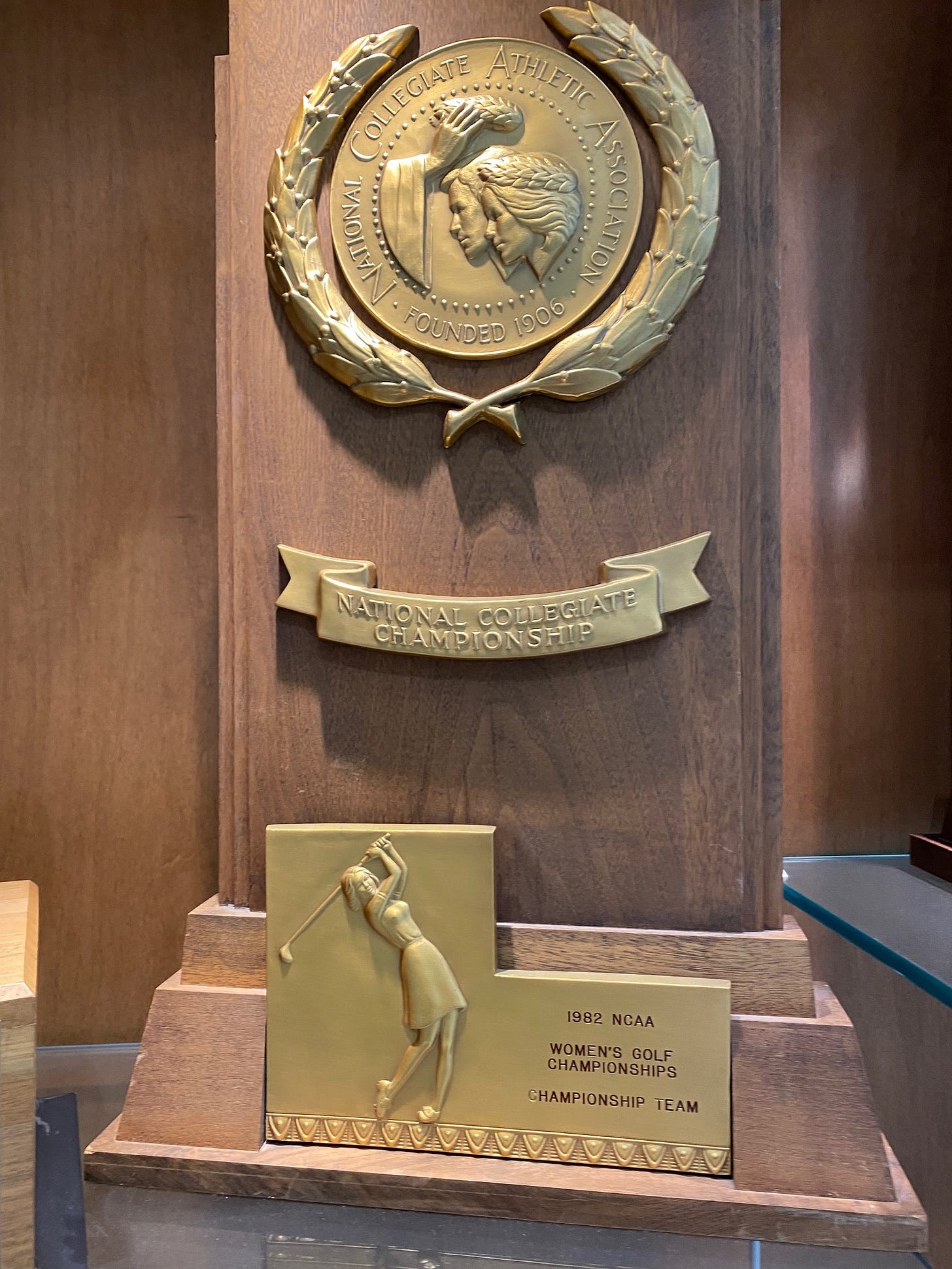

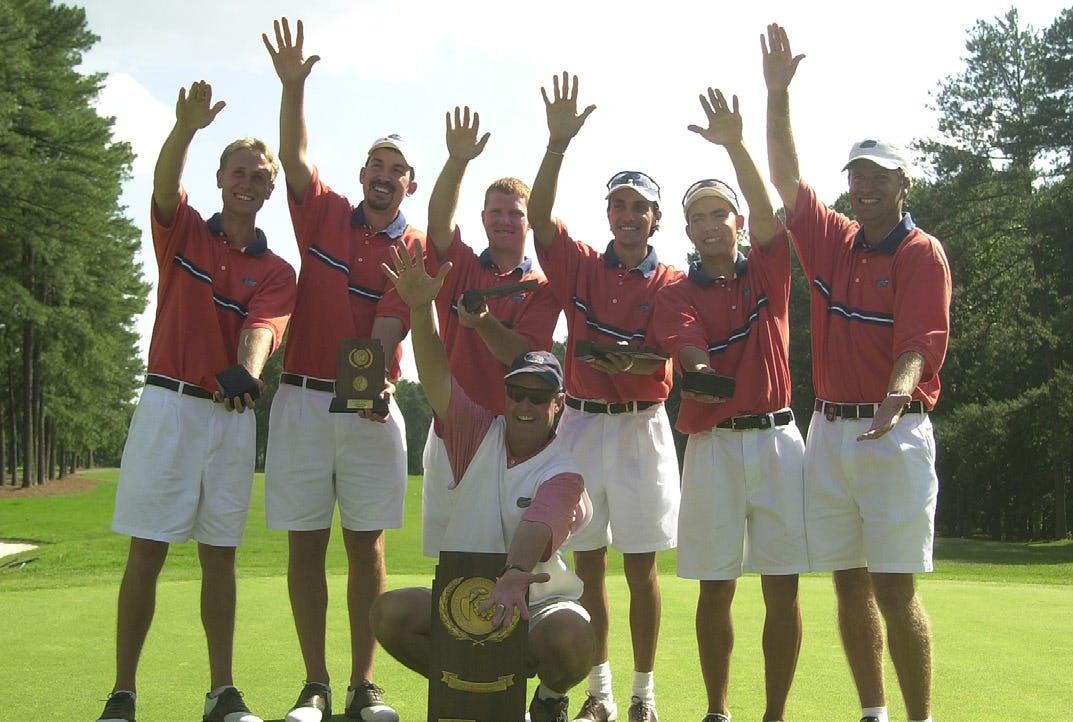
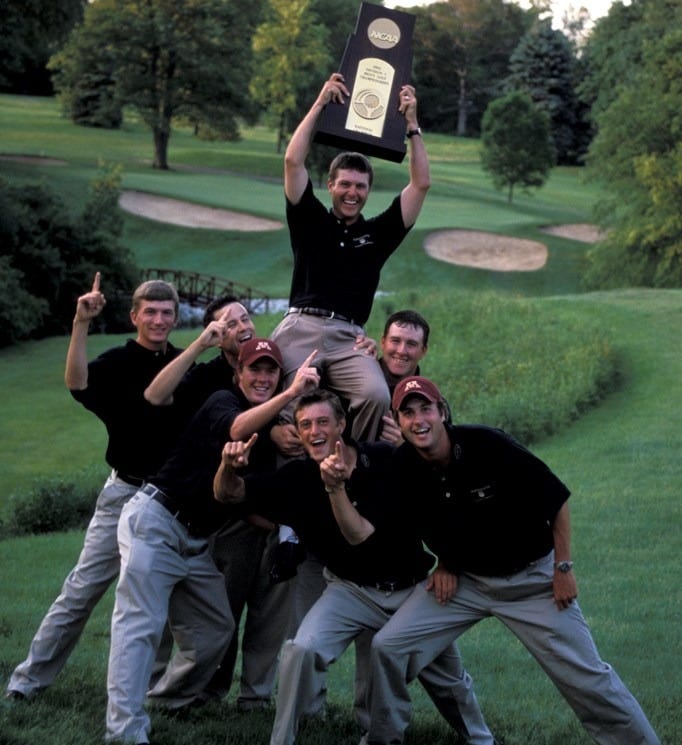
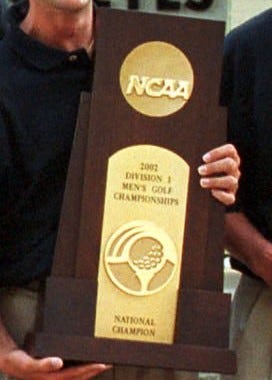
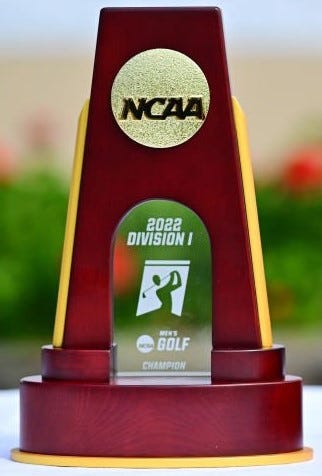
This article has really stuck with me. I can’t help but check every medal I see now 😆